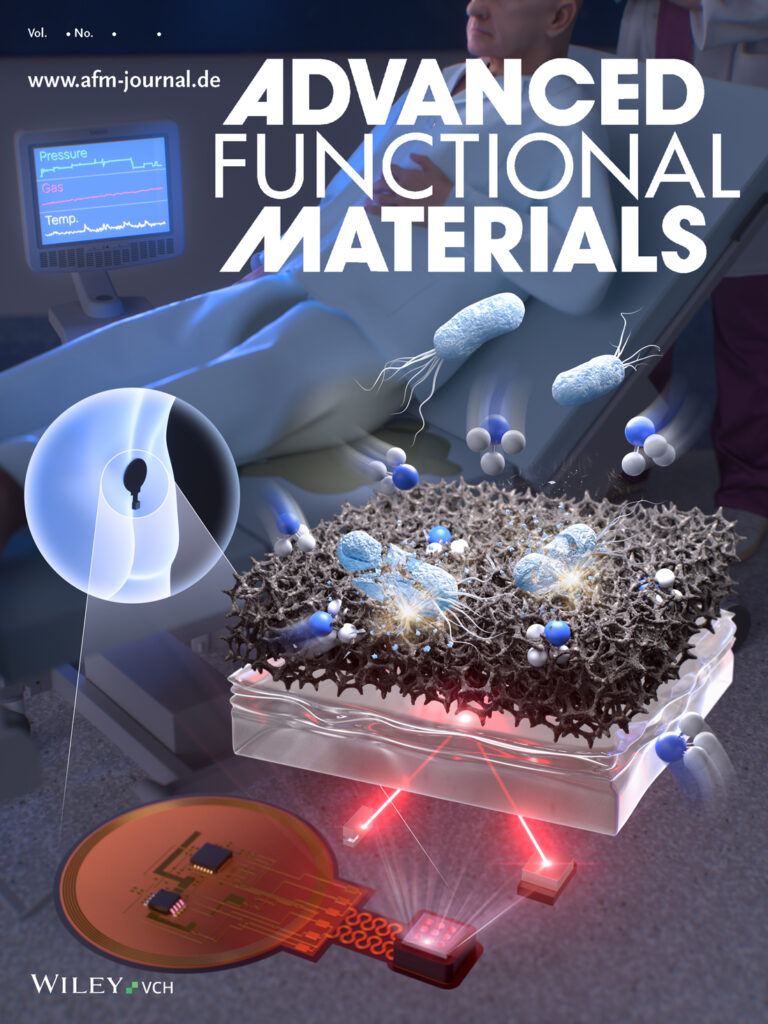
Journal cover / Advanced Functional Materials / Volume 35, Issue 39 September 25, 2025
https://advanced.onlinelibrary.wiley.com/toc/16163028/2025/35/39
Abstract
Pressure injuries have garnered considerable attention in healthcare, particularly in individuals with limited mobility. Current pressure-monitoring methods primarily analyze only physical signals, which are insufficient for accurately assessing patient status. Biofluids contain rich chemical information that can reveal new insights for the comprehensive monitoring of pressure-derived tissue damage and ulcer formation. However, challenges related to multimodal sensing capabilities and lack of all-in-one analytical tools hinder practical applications in clinical settings. This paper introduces a battery-free, wireless multi-sensing device for real-time, in situ monitoring of the mechanical and chemical aspects of pressure injury and hygiene management. The device includes an optoelectronic pressure sensor (≈10 kPa), a temperature sensor (≈40 °C), a highly selective NH3 gas sensor (ppm level) that operates at room temperature and has antibacterial properties, and near-field communication reading circuits. The capability of the device for simultaneous and continuous monitoring of mechanical and chemical conditions in pressure-localized areas without mutual signal interference has been validated. Furthermore, the usability and multimodal sensing capability of the device are validated through human subject studies involving diverse physical conditions, demonstrating its feasibility and robustness in real-world clinical environments.

